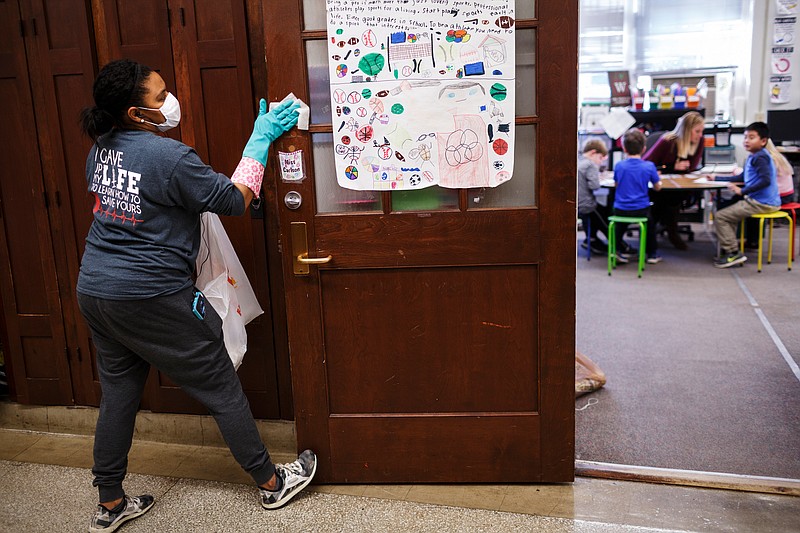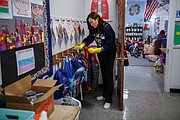FLU FACTS
› How does the flu spread?Most experts believe that flu viruses spread mainly by droplets made when people with flu cough, sneeze or talk. These droplets can land in the mouths or noses of people who are nearby. Less often, a person might also get flu by touching a surface or object that has flu virus on it and then touching their own mouth, eyes or possibly their nose.› What are the symptoms of the flu?Symptoms of flu include:fever (usually high)headacheextreme tirednessdry coughsore throatrunny or stuffy nosemuscle achesStomach symptoms, such as nausea, vomiting, and diarrhea, also can occur but are more common in children than adultsAlthough the term “stomach flu” is sometimes used to describe vomiting, nausea, or diarrhea, these illnesses are caused by certain other viruses, bacteria, or possibly parasites, and are rarely related to influenza.› How long is a person with flu virus contagious?The period when an infected person is contagious depends on the age and health of the person. You may be able to pass on the flu to someone else before you know you are sick, as well as while you are sick. Most healthy adults may be able to infect others beginning 1 day before symptoms develop and 5 to 7 days after becoming sick. Some people, especially young children and people with weakened immune systems, might be able to infect others for an even longer time.› What is the difference between a cold and the flu?The flu and the common cold are both respiratory illnesses but they are caused by different viruses. Because these two types of illnesses have similar symptoms, it can be difficult to tell the difference between them based on symptoms alone. In general, the flu is worse than the common cold, and symptoms such as fever, body aches, extreme tiredness, and dry cough are more common and intense. Colds are usually milder than the flu. People with colds are more likely to have a runny or stuffy nose. Colds generally do not result in serious health problems, such as pneumonia, bacterial infections, or hospitalizations.› How can you tell the difference between a cold and the flu?Because colds and flu share many symptoms, it can be difficult (or even impossible) to tell the difference between them based on symptoms alone. Special tests that usually must be done within the first few days of illness can be carried out, when needed to tell if a person has the flu.Source: CDC
More Info
› Cleaning removes germs, dirt and impurities from surfaces or objects. Cleaning works by using soap (or detergent) and water to physically remove germs from surfaces. This process does not necessarily kill germs, but by removing them, it lowers their numbers and the risk of spreading infection.› Disinfecting kills germs on surfaces or objects. Disinfecting works by using chemicals to kill germs on surfaces or objects. This process does not necessarily clean dirty surfaces or remove germs, but by killing germs on a surface after cleaning, it can further lower the risk of spreading infection.› Sanitizing lowers the number of germs on surfaces or objects to a safe level, as judged by public health standards or requirements. This process works by either cleaning or disinfecting surfaces or objects to lower the risk of spreading infection.Source: CDC
Doorknobs, handrails, lockers - any potential germ-harboring surface - were fair game as parents descended upon the halls of the Chattanooga School for the Arts and Sciences. They were waging a battle against contagions, hoping to curb the spread in what has become a wicked, and deadly, influenza season across the country.
Between Nov. 1 and Jan. 29, the Hamilton County Department of Education received 890 reported cases of the virus, an increase of more than 650 compared to the same time period last year. The absentee rate has been so bad that school districts in at least five neighboring counties were forced to close last week, with at least one planning to close Monday.
But the numbers represent only a handful of the total flu, strep and other illness-related absences among students and staff. On Thursday, 176 teachers called out sick in Hamilton County and 78 others were homebound caring for infected family members.
"We're dropping like flies," said Julia Gaines, assistant principal at CSAS. "And it's not only upper school, it's the lower level, too. Everybody's just falling apart."
___
The Centers for Disease Control and Prevention report released Friday showed the flu season continued to intensify last week, with one of every 14 visits to doctors and clinics for fever, cough and other flu symptoms. That's the highest level since the swine flu pandemic in 2009. Hospital stays because of the flu also increased.
"It's been the busiest I can remember for a long time," said Dr. Doug Olson, an emergency room doctor at Northside Hospital Forsyth, in Cumming, Ga.
The Tennessee Department of Health reported Thursday there have been six pediatric deaths and one death of a pregnant woman associated with the flu in Tennessee this season, while a coroner in Georgia said a 15-year-old girl was the state's first flu-related child death. Nationwide, there have been more than 50 child deaths, according to the CDC.
And there are signs the flu season may continue for weeks or worsen, according to CDC officials.
Across the country, illness and high absentee rates have forced school districts in at least 12 states to temporarily cancel classes. Here in the Chattanooga region, five districts have been impacted by closings so far.
Milburn Harmon, assistant director of Meigs County Schools, said the district was closed Thursday and Friday after 30 percent of the student body was absent and 35 staff members, including teachers, cafeteria workers and bus drivers, were out Wednesday.
"It was just a matter of being able to staff buildings, transportation, etcetera. That, along with the absentee rate, was the reason why we decided to shut down," he said. "The totals were getting larger each day of the week."
Also caught in the wave of illness was Cleveland City Schools, where at one point during the week, 1,626 students were out, said Director of Schools Russell Dyer in an email.
"That is far above the norm," he said. "A final decision to close was made [Thursday] after seeing a spike in both groups dealing with attendance. We were also struggling to fill classes with substitute teachers."
Other school closures included Bradley County Schools, which closed Friday and suspended elementary activities until Monday; McMinn County Schools, which closed Friday and Monday; and Van Buren County Schools and Westwood Baptist Day School, which closed Friday.
___
Sheryl Fletcher, school health program manager for Hamilton County, said many schools in the district, and across the nation, have called upon cleaning services and volunteers to help control the spread of the virus.
At CSAS, volunteer coordinator Jennifer White organized a cleanup day last week and said they will repeat each week until flu season subsides.
"As I was walking down the hallway, I saw a lot of kids blowing their noses, coughing, and I thought, 'Maybe we need to disinfect this whole building,'" White said, adding that parents were eager to help and most brought their own cleaning supplies
Among them was Celena Guo, whose own children recently fell ill - her first-grade daughter with a fever and her third-grade son with a nagging cough. On Tuesday, she volunteered several hours to scrub the school.
"I'm just worried about the kids," she said. "I know the flu season has been getting worse, and I wanted to help out."
Fletcher said one challenge for the schools during a rough season is fewer people tend to opt for the flu shot.
"We really want to still encourage people, regardless of what happens, please continue to get your preventative vaccines," she said.
And while the outbreak's severity varies between school districts at the moment, officials were unified in their message: stay home if you're sick.
Contact staff writer Elizabeth Fite at efite@timesfreepress.com or 423-757-6673.

